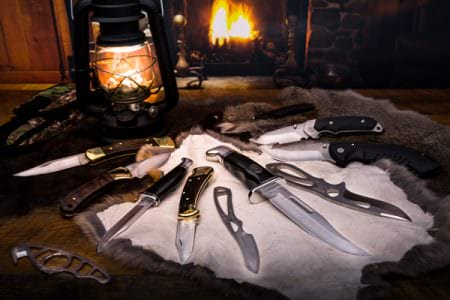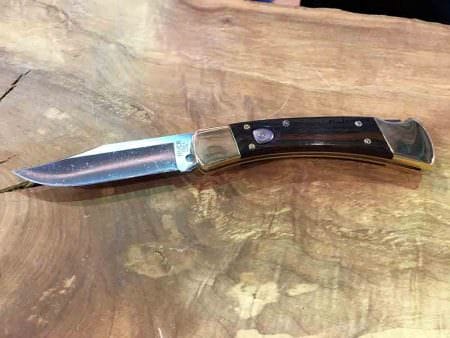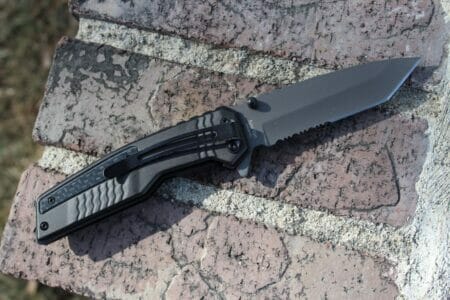

U.S.A. –-(Ammoland.com)- All Outdoorsmen use a knife and yet only a very small minority can sharpen one. It seems to be a lost skill of the ancients but let’s see if we can’t help you out a little today. Due to the complexity of the topic, I won’t be able to totally train you in one short article so I’ve included some links below for further instruction.
To begin, nowadays most knives are constructed of metal that is so hard that you cannot adequately sharpen them on an Arkansas stone so I recommend using a fine Diamond stone as you’ll be able to obtain an edge within minutes. I’ve had good luck with Smith’s Products.
So let’s get started. You see people grinding their knife in a circular motion, others cutting into the stone and yet others cutting away. Which way is the correct method? It doesn’t matter, as long as you use the same (correct) angle all the way down the edge.

For simplicity, I cut into the stone three times on each side. You will tend to have a smaller angle as you get into the curvature of the blade. To eliminate this, I recommend lifting your elbow when you start into the curvature. Watch the YouTube below to comprehend what I mean.
If the edge is really dinged up and mushroomed I’ll slide the blade backward the first four revolutions to get the metal molecules all lined back up and then I’ll start cutting into the stone.
To put on a finer edge you’ll now advance to the Arkansas stone. Add a few drops of honing oil before you start. Use the same procedures as you employed on the diamond stone until the edge feels smooth. When it does, then test it by slicing a piece of paper.
Most boning knives and fish fillet knives are going to be made of softer metal. So to sharpen one of them you’ll want to start right off on an Arkansas stone. Then to put a wicked edge on them you’ll need to progress to a smooth steel. Doing this will put an unbelievably sharp edge on them.
For a smooth steel to perform it is imperative that you properly prepare it. I use 80 grit emory cloth and rub it up and down to put microscopic lines in the steel. You want these lines running straight from head to tail. If the steel is dinged up, rusted or has pits it will harm your knife edge more than it will help it.
To use a smooth steel I hold it in my left hand against my bottom rib for stability and cut away from me, almost like I’m peeling a carrot. Do this move at the exact same angle that you sharpened it. If you do this every two minutes while filleting fish or boning out your game it is possible to stay razor sharp all day long.
With practice you can become proficient at sharpening. But if you try to learn on a cheap knife from China you’ll be frustrated and lose faith. Use good knives. I’ve had good luck with Knives of Alaska. They’re well-made and constructed out of good materials. The metal is hard so they will hold an edge but not so hard that they cannot be easily sharpened.
PRO TIPS:
- Don’t let your knife get super dull and it will be easier to put an edge back on it.
- To clean your diamond stone use warm soapy water and a rag.
- Buy good quality knives.
I have an article for $.99 on Amazon Kindle titled “Knife Sharpening” that goes into deeper detail.
Knife Sharpening video on YouTube. Go to RonSpomerOutdoors.
About Tom Claycomb





